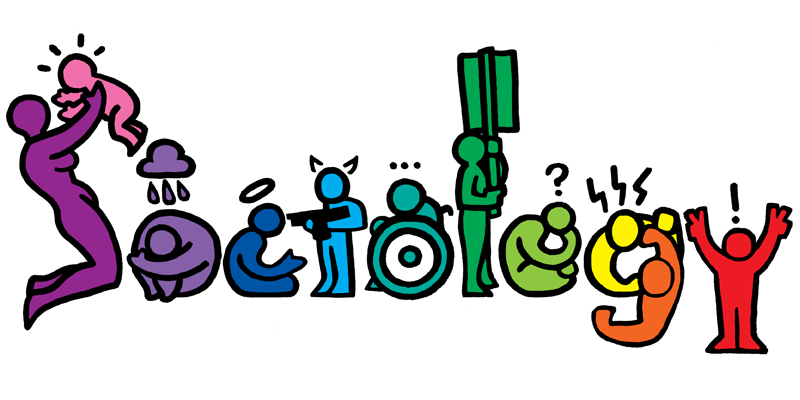Emotions
Article curated by Ginny Smith
We all recognise emotions, but what are they? What happens in our brain when we feel, and why have we evolved this way? Researchers from neuroslcience to AI are trying to solve the mysteries of emotions.

No one knows for sure why we feel emotions, but Darwin argued they evolved as a pre-verbal way of communicating. Facial expressions can demonstrate you are in need of help, sorry for something you have done, or even warn others to stay away if you are angry. However, some think there is a simpler explanation – the expressions evolved for one reason, and were then secondarily useful to tell what other people were feeling. For example, the widened eyes of fear could just be to help us to see better, and the disgust expression a way rejecting poisonous food. It is unlikely we will ever know for sure which of these theories is true, or whether there is another explanation entirely, but what is clear is that emotions are an important part of being human.
Learn more about Why do we have emotions?.

 2
2Body and brain

More recently, the Schacter-Singer theory has built on these ideas, suggesting that we cognitively assess both the bodily symptoms and the environment we are in to decide which emotion we are experiencing. Experimental support for this theory comes from the fact that, when injected with adrenaline but not told what it was, participants misinterpreted the symptoms as being caused by emotion. Which emotion they attributed it to depended on how the other people in the room were acting. If warned about the side effects of the injection, however, the same result was not seen.
Learn more about How emotions work.

 2
2
Despite wide agreement that smiling makes you happier and more easily amused, tests in 2015 did not corroborate this finding. Explanations include the presence of cameras or using undergraduates who had heard the theory and knew what was being tested, but researchers aren’t sure why they got mixed results. The other possibility is that the result has been refuted many times, but as journals don’t like to publish null results, nobody knew.

Bodily symptoms of emotions seem to be inextricably tied to the cognitive sensation of the emotion, but they may have another role as well. The somatic marker hypothesis suggests that behaviour, particularly decision-making, can be guided by emotional processes. When we make decisions, we assess the value of the choices available, using cognitive and emotional processes. We like to think we mainly rely on rational, cognitive factors, but this is far from true. When decisions are complex or conflicting, our cognitive processes are overloaded. In these cases, we rely on somatic markers to guide us.
Somatic markers can be subconscious, and develop based on past experiences. For example, if offered a choice between two decks of cards, one of which provides a riskier gamble with big returns but bigger losses, over time, most people begin to edge away from this pack, as their somatic markers kick in to give them a negative feeling towards it. They may not consciously realise they are doing this, or be able to say which deck is the 'bad' one if asked; however, their emotional response to it directs their decision-making. Researchers argue this applies in real life decisions as well; ubconscious emotional reactions to some of the options bias our decisions without us even knowing it. But how important these findings really are in our day-to-day lives is difficult to know for sure.


 2
2
To understand emotions, some scientists have looked at the brain. Historically, emotions have been thought to be based in the limbic system. However, improvements in imaging technology show this is an over-simplification[1]. While these regions are important, emotional networks also include areas such as the frontal cortex, while there are regions in the limbic system which now seem to be more related to memory than emotion.

Micro-expressions
Lying is part of life – whether it is telling your aunt how much you love the hideous jumper she got you for your birthday, or calling in sick at work. But some people claim to be able to spot lies, or more specifically, faked emotion, using micro-expressions. Micro-expressions are facial expressions that last between 1/15th and 1/25th of a second but can be captured on slowed-down film, or by trained viewer[2]. They are said to give away an emotion the person is trying to conceal.
This is an example of emotional leakage, when elements of the emotion you are trying to hide (either from yourself or from others) escape fleetingly. It is harder to conceal negative than positive emotions, so these are the most likely ones to leak. It has been claimed that by learning to spot micro-expressions, you can tell if someone is lying, but research has shown no consistency.

Disgust

Learn more about Disgust.

 2
2Strangely, there seem to be sex differences in the way we perceive disgust. On average, women tend to report feeling more disgust than men when looking at something unpleasant. However, this only holds true in western countries. In other places, such as Ghana and Turkey, women and men have much more similar levels of disgust. When the data is analysed, it becomes clear that western men are the ‘odd ones out’, experiencing unusually low levels of disgust. So why could this be? One theory is evolutionary- women have to protect their pregnancies and children, who are more at risk from pathogens, so are more wary of potentially infectious objects. This fits with the finding that disgust sensitivity increases in women when they are pregnant. It wouldn’t, however, explain the cultural differences. Another theory is that western men feel the same amount of disgust, but are pressured by society and women’s desires to play it down!

 2
2Is it really disgust people feel at immoral behaviour, or just a metaphor? It isn’t clear whether true disgust can ever be felt for things that aren’t related to the body, although many researchers claim it can. It may be that culture has co-opted the emotion of disgust, but that it has become something subtly different when applied to non-bodily aspects. Contempt, for example, is a very closely related emotion – even the facial expressions for disgust and contempt are remarkably similar.

 2
2People who carry out acts deemed immoral are often labelled with disgust terms as scum or animals. This can lead to the dehumanisation of certain social groups, and those associated with them. People will often avoid associating with them, or even being in close proximity to them for fear of moral contagion – irrationally.

 2
2
Embarrassment

There is evidence that even in the modern world, we think people who blush after committing a social faux-pas are more reliable and trustworthy, and we tend to like these people more than those who don't show embarrassment. So next time your face starts turning red and you wish the ground would swallow you up, you can reassure yourself that what is happening will only re-enforce your social ties with those around you.

 2
2Suspense
Scary movies, ghost stories and theme park rides are hugely popular – probably because of the release of hormones that accompanies fear. But the most intense moment is seconds before the monster appears or the ride plummets – the moment of suspense.
Theory suggests suspense is a moment of heightened awareness, making us more alert, and primed to spot danger. Recently, a study measured the brain activity of people watching suspenseful films. The calcarine sulcus, one of the first areas of the brain to receive and process visual information, was found to be highly active, and the researchers found that the brain's focus narrowed during suspenseful scenes[3]. Normally, when a film is presented with a flashing checked boarder, neurons in the brain respond to this rather than to the scene. Under suspense, however, attention shifted from the border to the scene. One suggestion is that this increases memory of the information focussed on, but further research is required before reliable conclusions are formed.
Learn more about Consequences of Suspense.


 2
2
Induced emotions
Music is a mixture of pitch, tone and pattern – and together has the power to manipulate emotion. While we know there are a wide range of brain areas involved in the emotions elicited by music, we don’t know why or how music creates these feelings in the listener.




AI emotions

As the abilities of AI and computer learning increase, some have turned their attention to programming robots with emotions. Whether this would be beneficial or even possible is an area of debate, and there are moral implications. So far, scientists have made machines that appear to have emotions, can simulate human facial emotions, or ones that can pass a Turing test (i.e. convincing humans they are another human and not a machine!). But if we see them reacting just like a human, who is to say the human has emotional experiences and the robot doesn't? This is a question that philosophers have long wrestled with, and is unlikely to be resolved soon.
Learn more about Programming machines with emotions.


 2
2Is a being with no capacity for emotions capable of more intelligent thought than one who is? Are emotions purely obstacles to reason, or is intelligent thought the product of an interaction between emotion and reason? We don’t know if superintelligent AI is even possible, but if it is, it could certainly run many many times faster and learn many many times faster than human minds. As such, some have claimed a mathematically defined code of ethics is needed to protect humans from superintelligent AI.


 2
2Scientists are also interested in the role emotions play in learning. Is it different to feel emotions rather than to recognise and understand them? They are now employing learning techniques such as Q-learning and other model-free machine learning processes to probe reward-based learning that mimics human emotions.
In the “mAIry’s Room” thought experiment, mAIry is confined to a grey room from birth and accesses the outside only through a black and white monitor. She is a brilliant scientist and has learnt all there is to learn about colour and perception. One day she experiences purple for the first time. The question asked by philosopher is, has she learnt anything? mAIry doesn't gain any extra explicit knowledge, but her brain has done something new in its processing.
This is known as TD-Lambda (temporal difference) learning: learning by the difference between a predicted reward and the actual reward. Where learning is the goal, AI can treat certain inputs as “special” or an “experience”, valuing them beyond their informational value. These inputs are thus AI “values”. This then allows smart AI to hold evolving values or ideas about what is “right”.
Learn more about /learning.


 3
3This article was written by the Things We Don’t Know editorial team, with contributions from Ginny Smith, Johanna Blee, Joshua Fleming, and Holly Godwin.
This article was first published on 2016-05-08 and was last updated on 2021-07-23.
References
why don’t all references have links?
[1] Edmund T. Rollsa, (2015) Limbic systems for emotion and for memory, but no single limbic system. doi: 10.1016/j.cortex.2013.12.005.
[2] Van Der Zee, S., et al, (2015) To freeze or not to freeze: A motion-capture approach to detecting deception. Proceedings of the Deception Detection Symposium, Hawaii International Conference on System Sciences 48.
[3] Bezdek, M., et al., (2015) Neural evidence that suspense narrows attentional focus. Neuroscience 303:338-345. doi: 10.1016/j.neuroscience.2015.06.
Recent emotions News
Get customised news updates on your homepage by subscribing to articles















